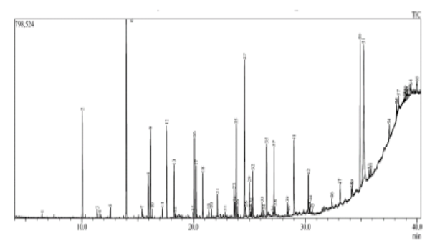


Indian Journal of Science and Technology
DOI: 10.17485/IJST/v16i46.1859
Year: 2023, Volume: 16, Issue: 46, Pages: 4401-4409
Original Article
Thangarasu Mohan1, Jeganathan Pandiyan2, Govindaraju Chandru2, Samidurai Jayakumar2, Kuppusamy Elumalai3, Sabapathy Vijayakumar4, Karuvi Sivalingam Subasri5, Kaliyamoorthy Krishnappa2*,Murugaiyan Annathurai3, Joothi Pillai Paramanandham2
1PG & Research Department of Zoology, Guru Nanak College, Velachery, Chennai, 600042, Tamil Nadu, India
2Department of Zoology and Wildlife Biology, A.V.C. College (Autonomous), Mannampandal, Mayiladuthurai, 609305, Tamil Nadu, India
3Department of Advanced Zoology and Biotechnology, Govt. Arts College (Autonomous), Chennai, 600035, Tamil Nadu, India
4PG & Research Department of Zoology, A.V.V.M Sri Pushpam College (Autonomous) (Affiliated to Bharathidasan University), Thiruchirappalli - 24), Poondi, Thanjavur, 613 503,Tamil Nadu, India
5Department of Mathematics, Vivekananda College of Arts and Science for Women, Sirkali, 610003, Tamil Nadu, India
*Corresponding Author
Email: [email protected]
Received Date:24 July 2023, Accepted Date:11 September 2023, Published Date:15 December 2023
Objectives: To identify the phyto-compounds from Manihot esculenta medicinal flora as well as leaf methanolic extract and major phyto-compounds were tested against larvae of medical pests. Methods: The various phytocompounds were isolated through GC-MS analysis, the selected phytocompounds and extract were tested by various concentrations against larvae of medical pests Aedes vittatus, Anopheles subpictus and Culex vishnui. Findings: A total of 65 PCs acquiring 100% and the Me-MPCs: 1,7-Dimethyl-4-(1-methylethyl)cyclodecane, Pentanoic acid, 5-hydroxy-, 2,4-di-t-butylphenyl esters and Dibutyl phthalate were identified which strongly confirmed through GC-MS studies. Me-LME and Me-MPCs: 1,7-Dimethyl-4-(1-methylethyl)cyclodecane, Pentanoic acid, 5-hydroxy-, 2,4-di-t-butylphenyl esters and Dibutyl phthalate were tested against 3rd instars larvae of vector species Aedes vittatus, Anopheles subpictus and Culex vishnui with their LC50/ LC90 values were 64.17/125.03, 9.363/17.17, 11.88/22.12, 14.33/26.82 and 89.65/177.62, 9.47/19.80, 11.94/24.90, 15.41/31.55 and 115.62/221.16, 11.51/23.82, 14.05/29.26 and 17.88/36.16 μg/mL respectively. Novelty: The selected phyto-products (Me-LME and Me-MPCs) were noticeably harmless tool on non-target fauna and very outstanding expression towards vector control approaches. In meticulously, the pure Me-MPCs were found multifold toxicity than the Me-LME in larval toxicity on selected mosquitoes which showed statically significant at p≤ 0.05 level.
Keywords: Phytoconstituents, Biotoxicity, Ecosafety, GCMS analysis, Vector mosquitoes
© 2023 Mohan et al. This is an open-access article distributed under the terms of the Creative Commons Attribution License, which permits unrestricted use, distribution, and reproduction in any medium, provided the original author and source are credited. Published By Indian Society for Education and Environment (iSee)
Subscribe now for latest articles and news.